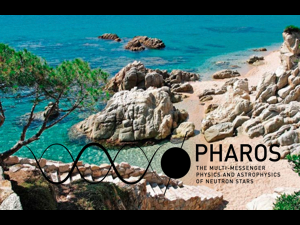Speaker
Dr
Manuel Linares
(UPC/GAA & IEEC)
Description
The maximum mass of a neutron star constrains the properties of
ultradense matter and the possible outcomes of double neutron star
mergers. Compact binary millisecond pulsars (with orbital periods
shorter than about a day) are a rapidly-growing pulsar population, and
provide a good opportunity to search for the most massive neutron
stars. Because their main sequence companion stars are faint and
irradiated, accurate mass measurements in these systems require large
optical telescopes. We present observations and detailed modeling of
an extremely irradiated companion to a millisecond pulsar. We apply a
new method to measure the velocity of both sides of the companion
star, and find that the binary hosts one of the most massive neutron
stars known to date, with a mass of 2.27 [+0.17-0.15] Msun. A 2.3
Solar-mass neutron star would rule out most currently proposed
equations of state, casting doubt on the existence of exotic forms of
matter in the core.
Primary author
Dr
Manuel Linares
(UPC/GAA & IEEC)
Co-authors
Jorge Casares
(IAC)
Tariq Shahbaz
(IAC)

